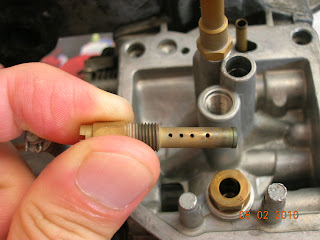
After 15,000km and 24 months, I decided to check on my Citra's timing belt tension to ensure peak performance. As the intake valve CVVT is driven via the exhaust valve CAM, it is imperative the tension is properly adjusted or there will be a discrepancy between the actual timing and the "readout" at the intake timing cam sensor, leading to incorrect CVVT setting by the ECU (TDC vs actual CVVT setting).
Before removing the timing belt cover,
make sure the engine is cleaned of all dirt, especially sand. Any dirt falling into the lower parts will eat into the timing belt gear spaces (ouch!). Refer to my earlier blog on engine wash guidelines.

This is an overall view of the upper-half of the timing belt after the top cover has been removed. Noticed that it is a single-pulley but twin cam engine. The intake CVVT is driven by a chain drive located at the rear of the exhaust CAM (refer to my attached video).

The timing belt cover can be removed "as-is", without removing any heavy duty stuff, with exception of the power steering hose, which is displaced to make room by removing a 10mm nut (pictured on the left).

Once the cover is removed, the tension of the timing belt can be assessed. Refer to my attached video on checking timing belt tension. The tensioner is located at the lower left.
{{ Videos on CVVT mechanism and checking belt tension }}Video 1 : Checking for Timing Belt Slack
Video 2 : Adjusting Timing belt tension, CVVT Mechanism System Overview
As per the Hyundai maintenance manual, the std. procedure for timing belt tensioning translated is:
a. Set the valve timing to TDC with the timing marks aligned at the crankshaft pulley and camshaft pulley
b. Release the timing belt tensioner.
c. Rotate the crankshaft pulley to tension the timing belt.
d. Take up the slack in the timing belt by rotating the tensioner against the timing belt.
e. Tighten the tensioner nut to lock the tension.
(( Good luck and enjoy driving the Citra. ))


















































